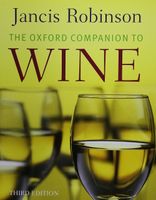Advertisement
The appellation Médoc
Published 2006
The total area qualifying for the basic Médoc appellation increased dangerously fast in the 1990s and early 2000s and reached nearly 5,700 ha/14,000 acres by 2004, 1,000 ha more than in 1996 and considerably more than that of the generally finer Haut-Médoc. It was still 5,531 ha/13,667 acres in 2013. Growers were encouraged by what they thought would be a steady increase in worldwide demand for red bordeaux. They were wrong and many found themselves in severe financial difficulties by the mid 2000s. Permitted yields are generally the same as for Haut-Médoc, and a high proportion of the wines are dominated by Merlot. Much of the wine produced on these lower, less well-drained, heavier soils is solid if uninspiring claret sold in bulk to co-operatives or to the bordeaux trade for blending into generic Médoc, if the growers are lucky. Estates on which an effort is made to produce something more distinctive than this, usually by restricting yields and refining winemaking, include Chx Les Grands Chênes, Les Ormes Sorbet, Potensac (run particularly fastidiously by the owners of Ch léoville las cases of St-Julien), Preuillac, La Tour de By, Tour Haut-Caussan (one of Bordeaux’s rare organic wines), and Vieux Robin. Goulée is a particularly concentrated blended Médoc made by the owners of Ch Cos d’Estournel.


